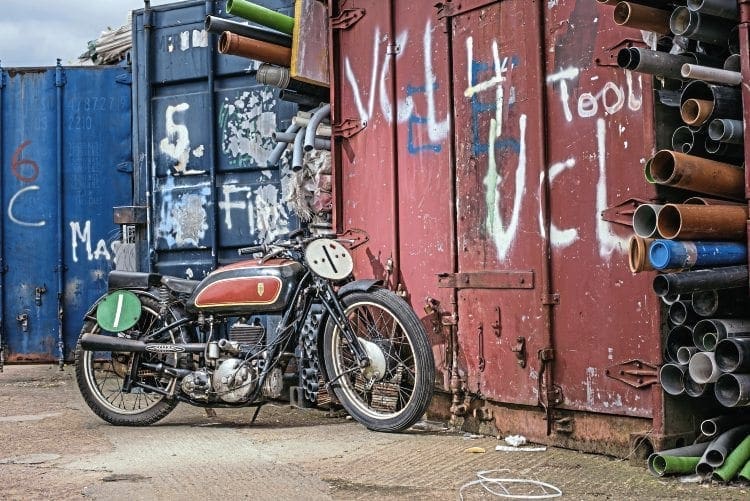
Words: James Robinson | Photography: Joe Dick / MORTONS ARCHIVE / PAUL INGHAM
DKW was the leading light in 250cc racing during the 1930s, its works machines all-conquering. There was a privateer version too, of which this is a rare example.
There are some motorcycles which have attained a mythical status, there are some which have been forgotten – for me, the prewar DKW racers are a combination of those two predicaments, sort of mythical, sort of forgotten.
They are known about, but not in any great detail, so it seems. They are mentioned in many of the oft-thumbed history of motorcycling books, but never in great detail. Information is often sketchy and contradictory, while what there is, is hard to find.
Enjoy more Classic MotorCycle reading in the monthly magazine.
Click here to subscribe & save.
And this SS250 production racer is even more in the ‘forgotten’ camp, mainly down to its scarcity but also, surely, underpinned by the feint whiff of judgment passed on its period creators.
For DKW was one of the German names that rose to dominate motorsport in the late 1930s, all part of the state-funded propaganda assault on the sporting consciousness of the world.
Whether it was the 1936 Olympics in Berlin or the Silver Arrows on the car race track, the Nazi hierarchy was on a mission to bring its brand of governance to the attention of the world, to show its strength and its superiority in every sphere of competition.
Of course, that mantra was to go on to lead to a quest for world domination through war – but the seeds of such ambition were sown with a desire to dominate world sport.
But while history has now come to judge, appreciate and celebrate the Mercedes and Auto Unions (Goodwood Revival’s 2012 Silver Arrows celebration was worth the entry fee alone to witness), and latterly the BMWs mainly due to the firm’s own active Mobile Tradition department, somehow DKW seems to have been largely overlooked, particularly in the UK.
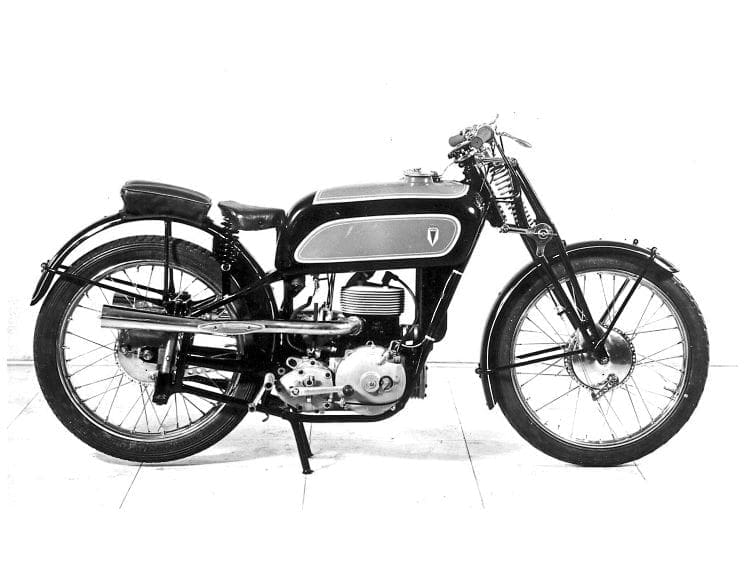
Whether it was because the firm’s efforts were concentrated on the smaller classes, perhaps yes, or if it was owing to the fact that the format of the engines employed was so unfamiliar (perhaps yes, too) or was it the fact two-strokes don’t appeal ‘across the board’ – but for whatever reason the DKW seems to have been somewhat overshadowed in the pantheon of motorcycling greats.
Though Audi has a selection of the models, they are rarely seen anywhere apart from in Germany, while the factory doesn’t have any records of the models too, as requests for information on the subject SS250 have proved.
Actually, though, the racers were great and don’t deserve to be forgotten or treated as a footnote. Such was the DKW dominance that in an editorial in The Motor Cycle of June 30, 1938, A Pressman was moved to write: “Given equal luck and equal riding, the DKW can win every future Lightweight [TT] without end, unless and until we change our designs.”
There was more too. “The Lightweight proved beyond contradiction that un-blown four strokes stand no chance whatever against a well-designed blown two-stroke twin cylinder.”
And the DKW was certainly well-designed and it was well-developed too, as some argue the design was flawed from the outset. More of that later.
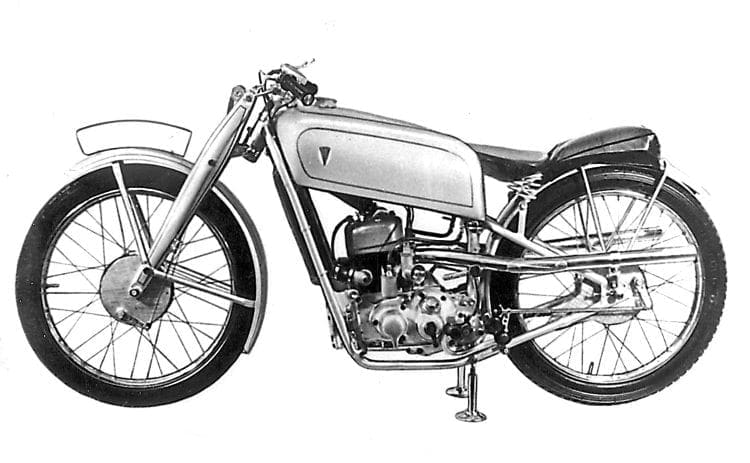
A brief history of DKW
J S Rasmussen, born in Denmark, established the DKW motorcycle factory in 1919, in Zschopau, Germany.
It was a brave decision – at the time of foundation, just 8000 motorcycles were registered in Germany. Rasmussen (Christian names Jorgen Skafte, then aged 40) had earlier tried other ventures including steam cars (dampf kraft wagen) but found success with a clip-on 118cc (some say 122cc) engine designed by Hugo Ruppe, which was launched in 1921.
Known as das kleine wunder (‘the little miracle’), over 25,000 were reputedly made in a year. DKW followed with a 142cc complete motorcycle in 1922, then a first pressed-steel framed model (the 173cc SM for Steel Model) for 1925.
Success came at a fast pace, with a 500cc twin coming in 1927, while Rasmussen bought a company known as Audi Werk in 1928; at this site in Zwickau DKW cars would be built, with motorcycles continuing to be made at Zschopau.
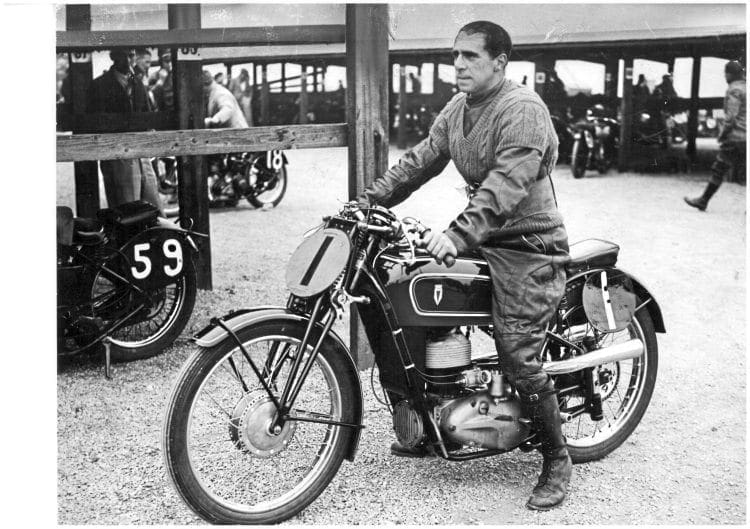
In 1932, DKW became part of the huge Auto-Union conglomerate, with the other three circles in the now-familiar ‘Audi’ four-ringed badge representing car makers Audi, Wanderer and Horch.
It was, though, the money generated by the motorcycle arm which kept the firm afloat and thriving.
Financial success was achieved in a number of ways – low manufacturing costs thanks to efficient assembly lines, a sound product and an excellent, well-established dealer network, including a great service network.
The dealers also offered a good, accessible hire purchase scheme. Machines under 200cc were, at that point in Germany, still tax free and there were no licensing laws either, though DKW also catered for the serious/sporting rider (i.e. those who had a licence) with its SB range, in a variety of capacities, up to a 500cc twin cylinder job.
By the early 1930s, DKW was the biggest motorcycle manufacturer in the world, employed 20,000 staff. One in every three motorcycles sold was a DKW with around 50,000 machines per annum rolling off the Zschopau production line.
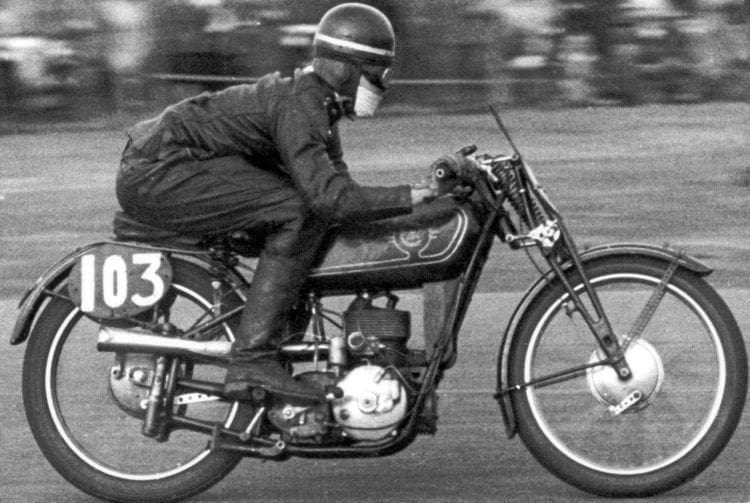
Works racing
The old creed ‘Racing improves the breed’ is, of course, correct – but there’s also another term which could be applied; ‘Racing improves the brand.’
From early on, DKW was keen to excel in competition, making its track debut in 1925.
Every racing model produced before the Second World War was supercharged by means of an extra piston, the purpose of which was to increase the displacement in the crankcase.
Though the early models were a success to an extent, performance really improved from 1931, when a split single layout was adopted.
This system used two cylinder bores in tandem, in the same casting, with a single combustion chamber.
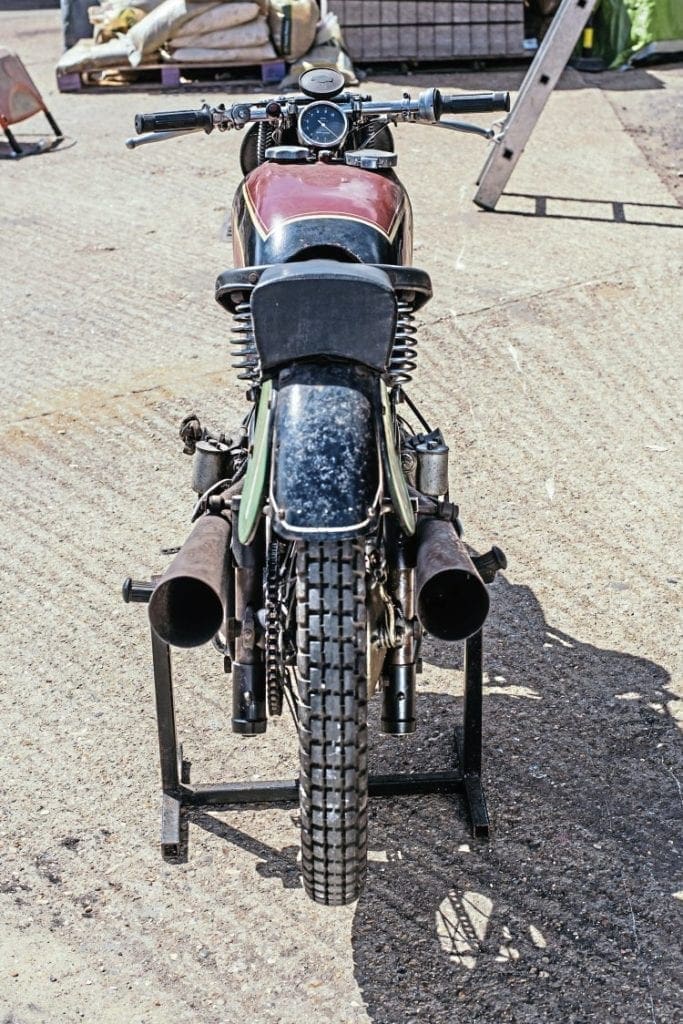
There were two exhaust ports in the rear bore and the transfer ports were in front, with plug mounted over them.
Water cooling meant that the exhaust ports could be so positioned, as they weren’t reliant on fresh air for cooling, so the water cooling ensured there was no distortion to the barrel from the heat generated.
But the key to the design’s success was the connecting rod arrangement. The main rod was attached to the exhaust piston and had a boss on the front end of its big end eye. To this boss was attached a shorter rod, attached to the transfer piston.
What this enabled was for the exhaust piston to always have a lead over the transfer piston, so that the exhaust ports opened before the transfer ports but also closed early on the upstroke, meaning a reduction in the incoming gas escaping to the exhaust and allowing more complete cylinder filling.
It was this system, with a few alterations to the induction, with which DKW was to become the dominant force particularly in 250cc racing.
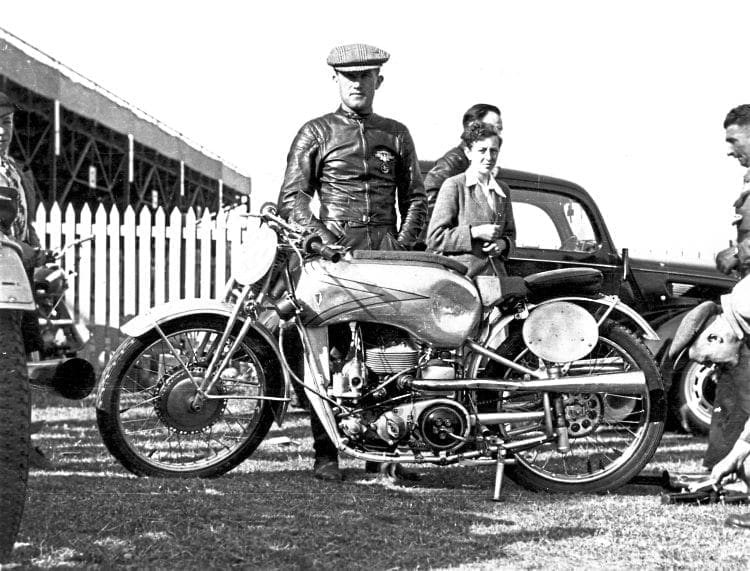
It wasn’t just the fact that the motorcycles were spectacular performers – the whole aura around the team was one of huge professionalism and clearly meant business.
The racing department reputedly had 100 people working in it in the early 1930s, which had risen steadily to an incredible 200 by 1939, while the team’s works racing unit would arrive early at circuits, with scores of mechanics, clad in bright blue overalls, decamping and setting up base.
Surely, half the amateur-hour British boys, with their caravan of old American cars, trailers and trucks were already mentally beaten before a screaming Deek was fired up or a wheel turned.
When the wheels of the sleek silver racers started to turn, the spectacle – with the accompanying wailing soundtrack – only underlined what other competitors must have felt before the racing even started.
But not everyone has been universal in their praise for the sophisticated racers. In Classic Racer magazine in 1987 Brian Woolley wrote a two-part article entitled ‘Building a Pup’ in which he argued that “… though they did not realise it at the time, they [DKW] had committed themselves to a racing design that was quite fundamentally – unsound!”
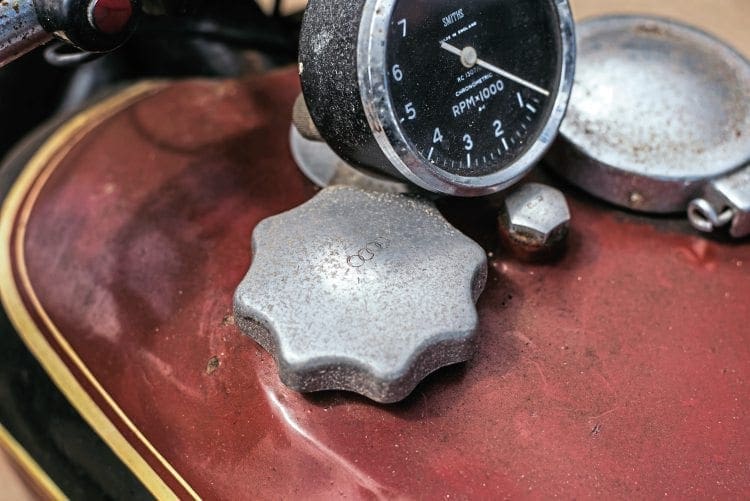
He goes on (in part two) to recognise his statement “…may appear perverse in view of DKW’s successes between then [1932] and 1939.”
Then by detailing the vast expenditure of the DKW effort, the quality of the team’s riders (Ewald Kluge, Siegfried Wunsche and Artur Geiss chiefly among them) and the paucity of the opposition, Woolley further substantiates his claim.
But the record books show how Kluge won the 1938 250cc Lightweight TT by 11 minutes; he led from start to finish, and lapped at over 80mph.
Kluge was European champion in 1938 and 1939 (in both years on the ‘new’ version of the DKW with the pumping cylinder now vertical in front of the engine, driven by gears from the crankshaft).
The SS models
Though a moniker which now has unfortunate connotations, the SS250 and later SS350 were among the finest racing irons available to the privateer – though only the well-heeled privateer.
Introduced in 1935, the first SS250 featured a rigid frame and was finished in the same silver colour scheme as the works racers. Price was 1550 Reichmarks; equivalent to something like £125.
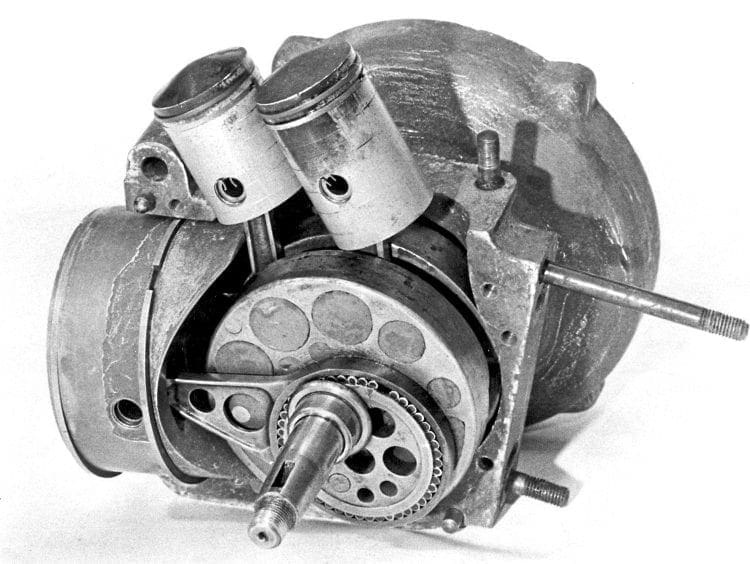
To put that into perspective, an International Norton was £95-10s, a Brough Superior SS100 £140.
Despite the price tag, it was reckoned every SS250 was sold at a loss. Interestingly, though, the machines weren’t built by the race department, but in the normal production facility.
In 1938 the rear suspension as used on the works racers was adopted, while a red-and-black paint scheme was implemented, supposedly to make it easier to pick out which were works racers and which were private owners.
Though the speed differential may have helped with identification too…
By the time that the featured machine was produced, the works racers had adopted a layout where the pumping cylinder now stood vertically in front of the engine and its crankshaft was driven by a chain of gears.
The SS was based upon the URe, which was effectively the machine used by the works team up until 1937. While the URe was replaced by the rotary valve ULd in 1938 for the works team, the earlier technology remained in place for the ‘production’ racer.
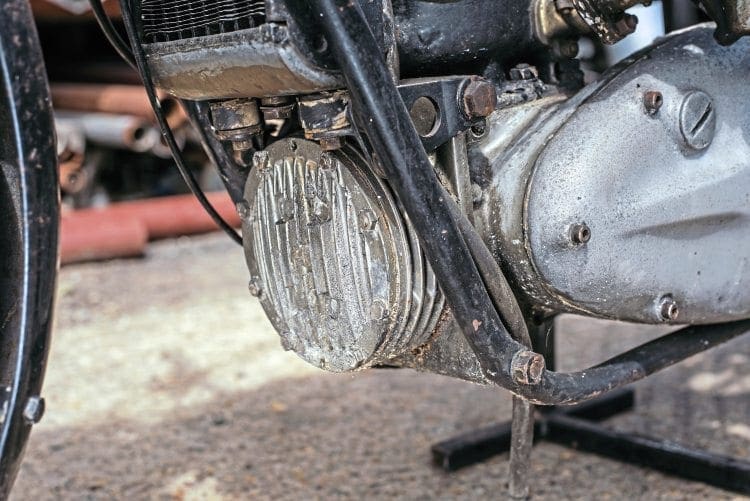
Sold in strictly limited numbers, some sources (an Alan Cathcart Classic Bike article in 1982) reckon that between 40 and 50 250SS machines were made per annum between 1935 and 1938 inclusive (plus 15 350cc versions in 1938), which equates to a total of less than 200 in total.
A record of engine numbers for the SS250 shows slightly differently, recording that in 1935 numbers 260001-260025 were made, in 1936 260351-260375 were produced, none in 1937, 260401-260435 in 1938 and 260701-260725 in 1939.
Additionally, the ‘five piston’ (double split-single with one double-acting pumping piston) SS350 with numbers 260751-260775 were made in 1939.
So, that means a total of 110 SS250s, and 25 SS350s. Rare, with survivors seemingly scarcer still, with lots which remained in Germany seemingly destroyed or broken up during the Second World War.
In his 1987 article Brian Woolley is withering about the performance of the SS250: “… the 250cc machinery sold to private owners… was painfully slow. The few imported into England never made any impression.”
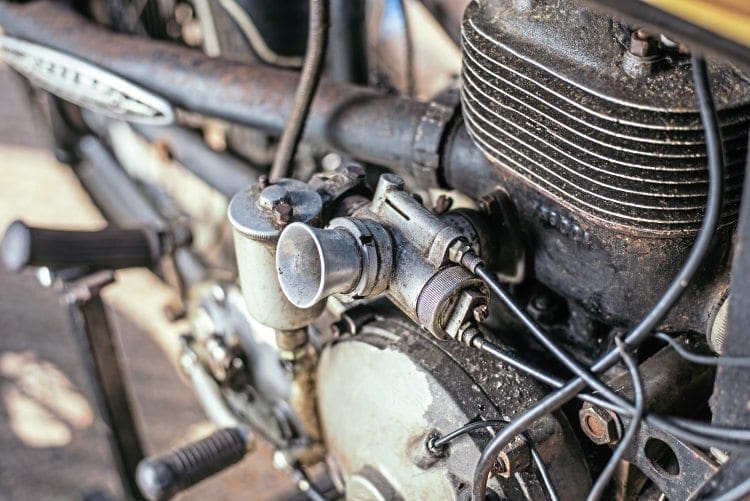
Some sources indicate as few as two found their way to the UK in the years preceding the Second World War – Motorcycle Action Group (MAG) founder member Dennis Howard wrote a letter to The Classic MotorCycle in the spring of 1982 making this assertion.
A duo of well-known Scott racers and enthusiasts were among those linked with the screaming split singles.
One owner was apparently Frank Varey, the Scott speedway ace from Sheffield known as the Red Devil, with the other Noel ‘Mavro’ Mavrogordato (who first raced a Scott in the 1926 Amateur TT and was supposedly responsible for the quip when asked why he didn’t switch marques away from Scott for a better chance of success, that he’d “… rather lose riding a Scott than win on anything else”) who campaigned one on the UK scene in 1938 and 1939.
But Dennis Howard contradicts Brian Woolley’s “painfully slow” jibe as he reports seeing Mavro and the Deek “a’whizzing with a trail of smoke behind him” at a pre-Second Word War event, where he, says Howard, made fastest lap.
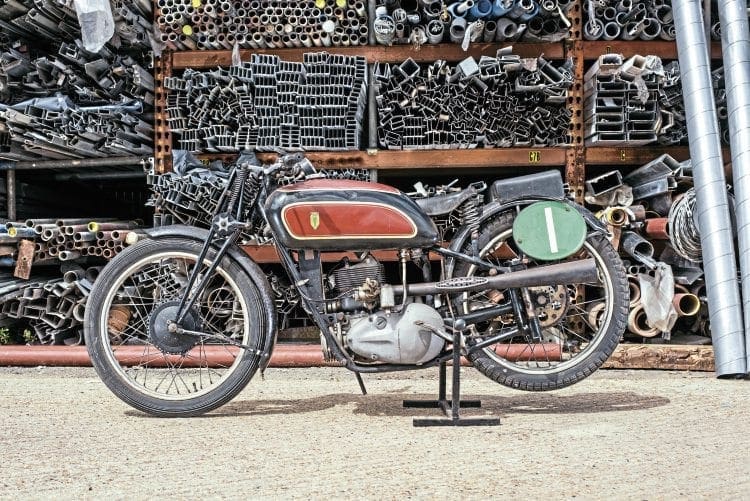
Mavro was apparently entered for the 1938 Manx on the DKW but after an accident in a Comper Swift aircraft, he was forced to scratch his entry.
Mavro and the Deek are later mentioned in a 1939 race report from Donington Park, when he crashed out of a battle for second place at the Melbourne Loop.
The 1939 Lightweight TT entry list doesn’t contain any Deeks other than the four works entries.
The 1939 MGP was cancelled though Mavro was to appear in the 1946 Manx with his.
Interestingly, there was another DKW entry in the 1946 races, for A J Wilkinson, but he and his Deek failed to appear.
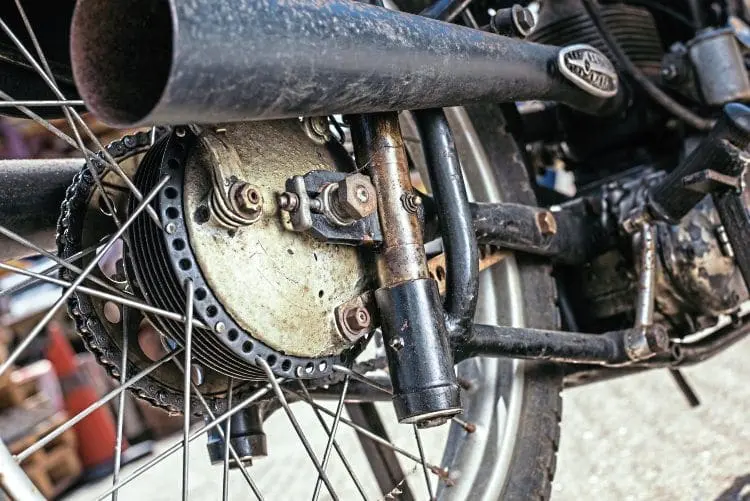
Although showing fairly well in qualifying and lapping at over 65mph, Mavro (who first raced at the Manx in 1926) didn’t have a great race, despite the Deek emitting a “piercing yowl as he set…off the mark with a lightning burst” he didn’t last long.
His Manx ended with a seized gearbox at the Craig (the Greig) on the first lap.
There were reports of a few others in the UK over the years.
There’s one in Sammy Miller’s museum which is a silver-finished SS250 and appeared in John Griffith’s book Historic Racing Motorcycles – at which time it was owned by Henry Body, who bought it in 1955 from Bonnie Good and restored it, with much help from Ewald Kluge; earlier, the same machine had been raced in the UK by Good circa 1948, while Henry has another ex-works machine (1935/36) which has appeared at recent Bristol shows and which came to the UK in the mid-1950s.
In 1947, Les Archer junior (later a scramblers star) campaigned what is clearly a DKW SS250 rebadged as an EMC when owned by Joe Ehrlich.
Archer’s successes including winning the 1947 Hutchinson 100 held at Dunholme Lodge just outside Lincoln.
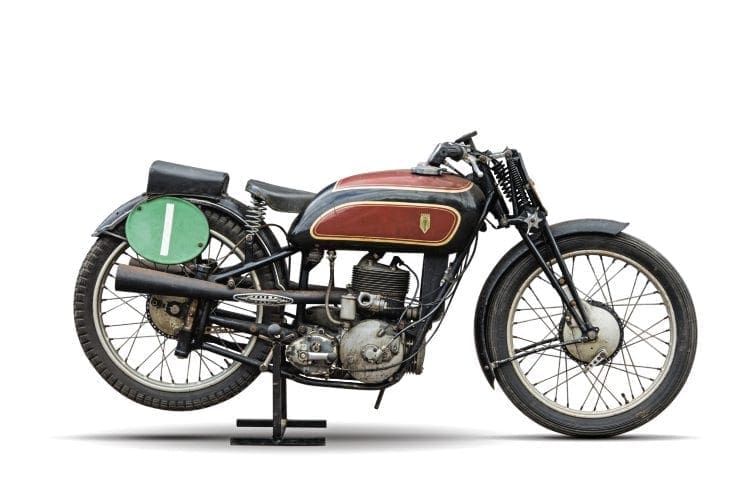
Some reports reckon Ehrlich later tried to convert a DKW to non-supercharged operation (after supercharging was outlawed) before concentrating on his own engines, while other reports seem to suggest Ehrlich had more than one Deek.
The subject machine was bought by the vendors in 1976, having previously been owned by a man named Roger Slee, who appeared with it at various vintage race meetings and practise days in 1974/75.
But no one we’ve spoken to seems to really remember Mr Slee and the Deek; though they must have made quite an impression at the time, if nothing else for the noise! Indeed, classic racing stalwart Richard Adams remembers seeing (or more precisely, hearing) a DKW in the 1970s at Mallory; that would be this machine, in 1974.
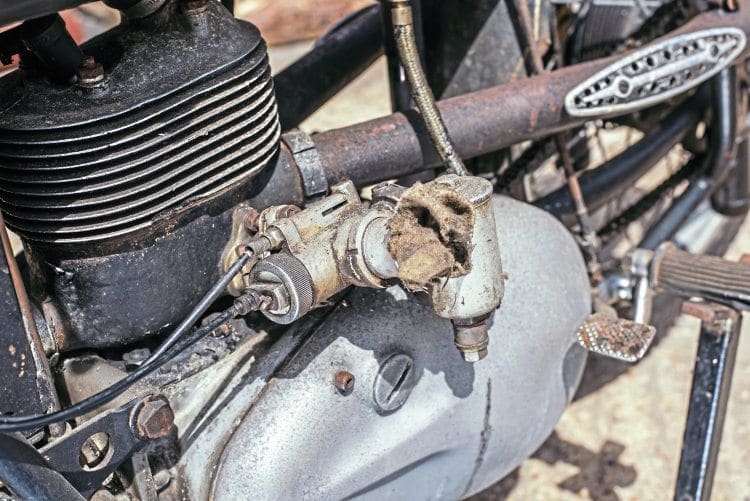
After it was purchased, the DKW was simply allowed to stand in a collection – and there it has remained.
Now, the vendor – whose father was responsible for the initial purchase and has no history with the machine, though there is a vague suggestion of an Ehrlich connection – has various other projects ongoing, and is parting with the rare racer to raise funds.
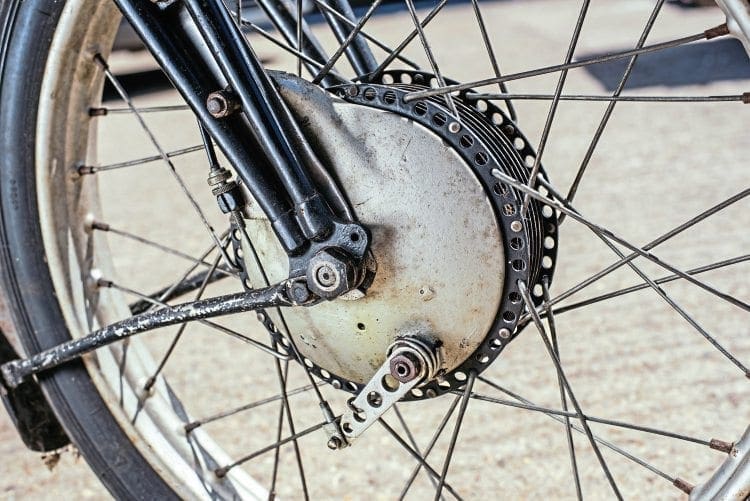
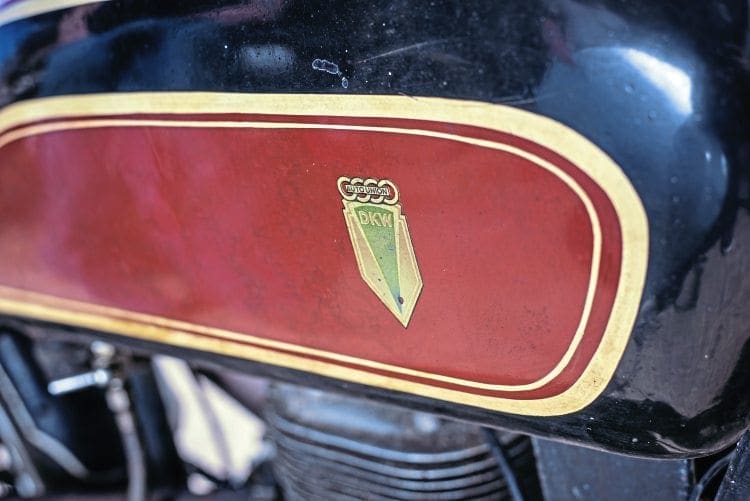
Does it run?
This SS250 hasn’t been run for years. There are a few at events on the continent – a friend followed one at Montlhery earlier this year and reckoned it was “quite noisy!”
This one hasn’t been run for years so its new owner will want to spend some time checking it over. Though it doesn’t go, I couldn’t resist climbing on board, with it on the stand, and ‘tucking myself in.’
It is a small machine, with elbows and knees in close proximity when a racing crouch is adopted.
I couldn’t help imagining what it’d be like to ride and, hopefully, will look forward to seeing it on track.
In 1982, Alan Cathcart talked of a “vibration free” engine while reckoning the handling – criticised in some quarters in period – was “predictable throughout” and steering was “excellent, even outstanding”, though he did point out he was riding on the super-smooth Misano circuit.
This rare SS250 sounds like, with recommissioning and renovation, it will give a ride which won’t disappoint. Or at least a noise which will prove memorable. What a fascinating machine
Advert
 Enjoy more The Classic MotorCycle reading in the monthly magazine. Click here to subscribe.
Enjoy more The Classic MotorCycle reading in the monthly magazine. Click here to subscribe.



